#Spanish Renaissance Revival
Text
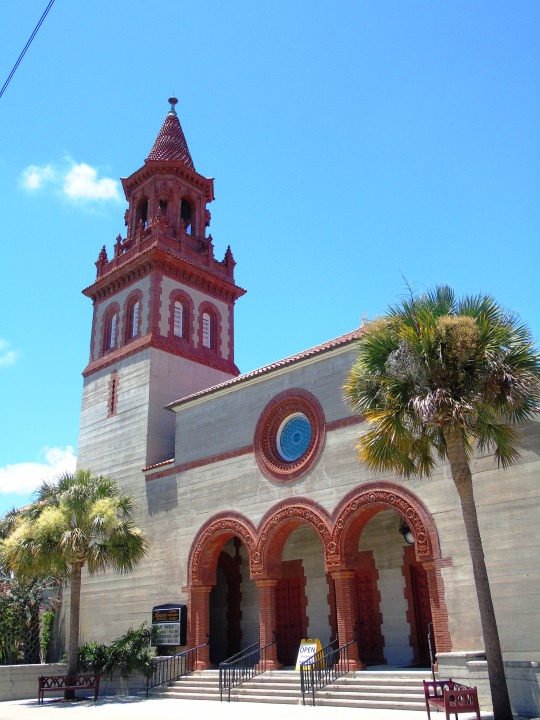
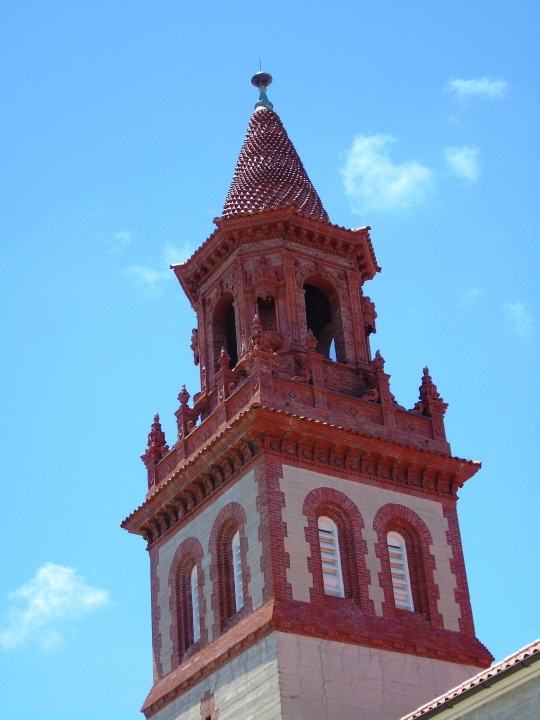

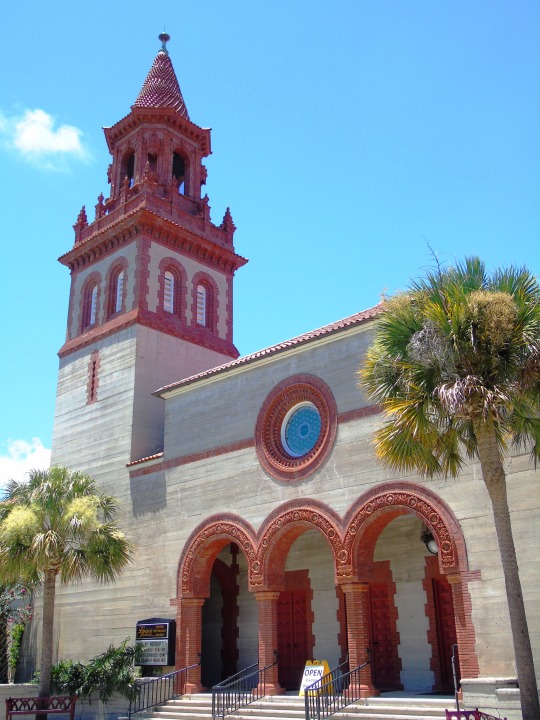

The Grace United Methodist Church was added to the U.S. National Register of Historic Places on November 29, 1979.
#Grace United Methodist Church#US National Register of Historic Places#USA#summer 2016#Carrere and Hastings#Spanish Renaissance Revival#Florida#St. Augustine#29 November 1979#original photography#architecture#travel#exterior#façade#detail#bell tower#palm tree#cityscape#landmark#tourist attraction#anniversary#US history#vacation
6 notes
·
View notes
Text
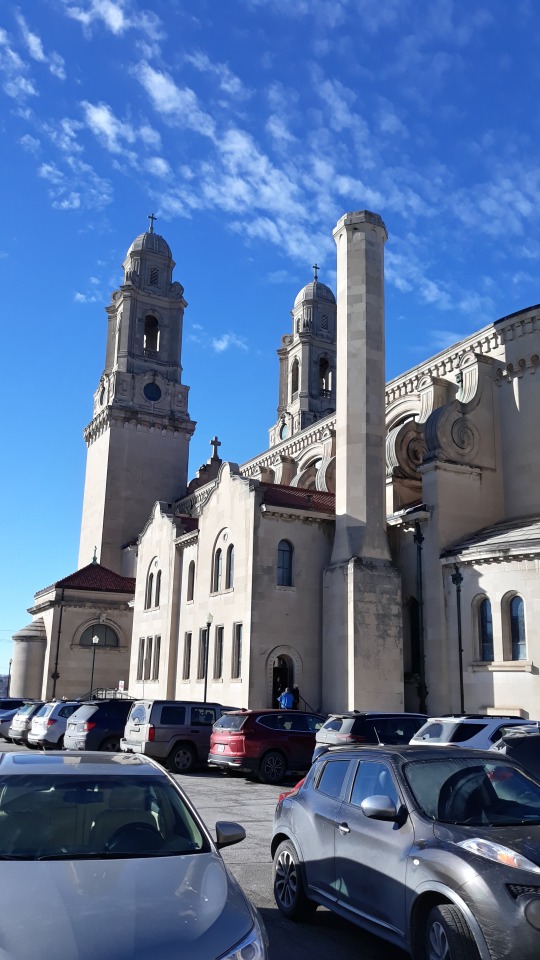
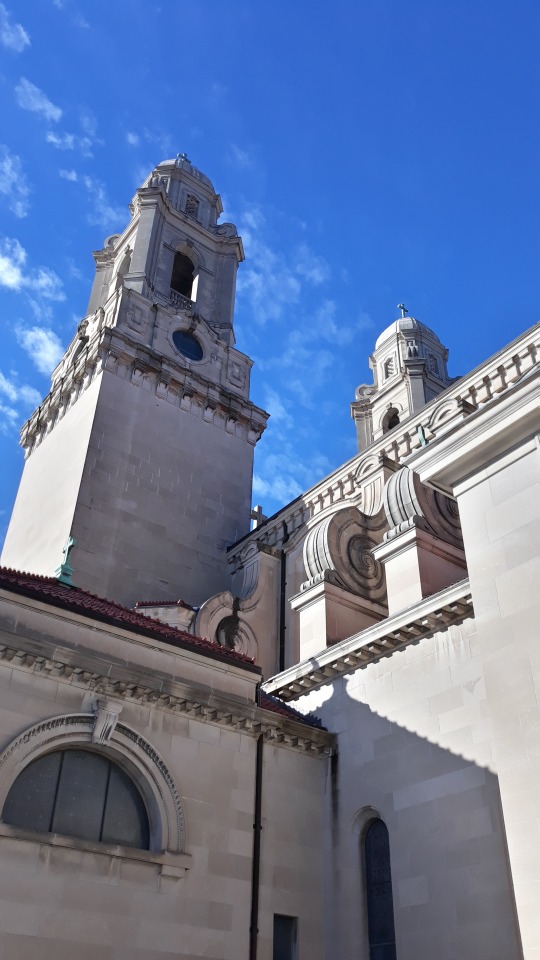
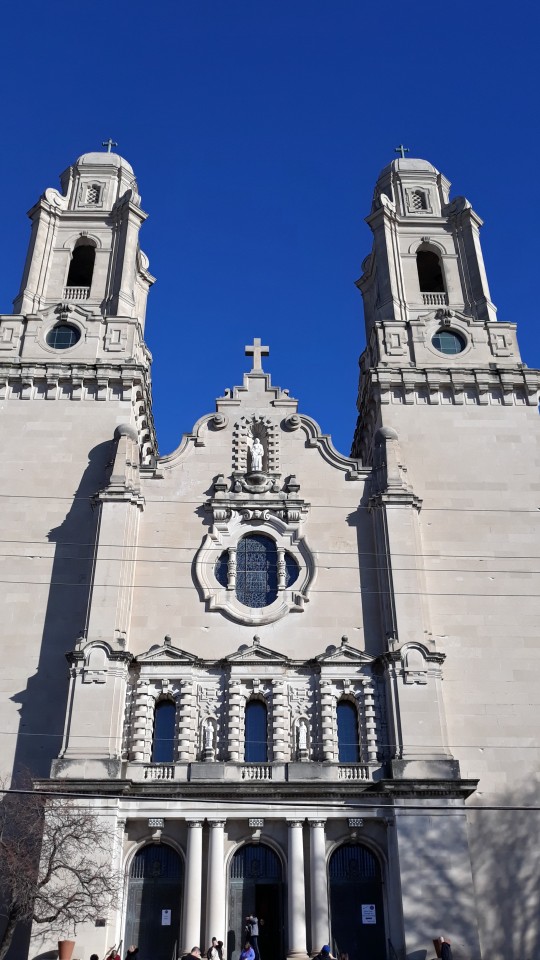
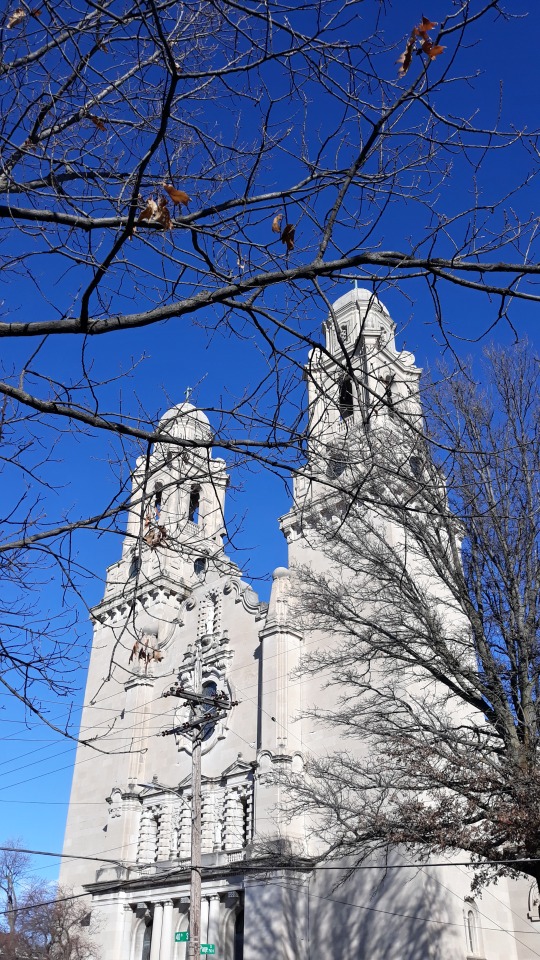
Saint Cecilia Cathedral, Omaha, Nebraska https://midwesternartlovertraveler.tumblr.com/
#my own photo#architecture#spanish renaissance architecture#spanish renaissance#spanish renaissance revival#cathedral#cathedrals#catholic#roman catholic#saint cecilia cathedral#st cecilia cathedral#omaha#omaha nebraska#nebraska
9 notes
·
View notes
Text
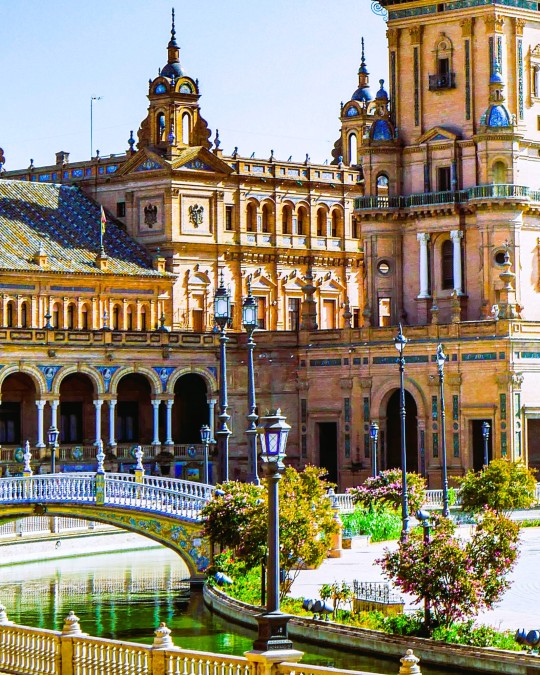
Plaza de Espana, Sevilla, Spain: The Plaza de España is a plaza in the Parque de María Luisa, in Seville, Spain. It was built in 1928 for the Ibero-American Exposition of 1929. It is a landmark example of Regionalism Architecture, mixing elements of the Baroque Revival, Renaissance Revival and Moorish Revival styles of Spanish architecture. Wikipedia
101 notes
·
View notes
Text
Jessamine's design has always intrigued me. the stark, full black suit and tall collar are pretty obvious status symbols. black was for the longest time an incredibly expensive colour of fabric due to how difficult it was to achieve proper rich blackness during the dyeing process and the collar, while most likely just a trend in Dunwall fashion inspired by the 1890s high collars can be read as lace, especially in some concept art, which is hard to care for and needs to be starched to hell and back to keep nice and stiff for a collar like that
but what I find a lot more curious about this is that the clothes appear very much inspired by Spanish renaissance fashion
which, honestly, would make sense with the real world inspiration. 19th century was obsessed with the past, with the romanticized medieval and renaissance times, and it was quite common to see fashion inspired by times long past (I mean, just look at Worth. the man invented haute couture and there is so much influence of medieval and Elisabethan fashion in his designs). it was also a thing for rich families to just kinda... invest in recreations of historical pieces of clothing and LARP in them.
Jessamine's clothes, in particular, reminded me of Spanish court dresses. especially of the portraits of Anne of Austria and Elisabeth of Valois

obsessed with those slit sleeves. too bad Jessamine didn't go the extra mile to have the sleeves hang long and heavy around her arms but they were more form fitting
there is also something to be said about the tall white (possibly starched lace) collar and the style of clasps used on her clothes
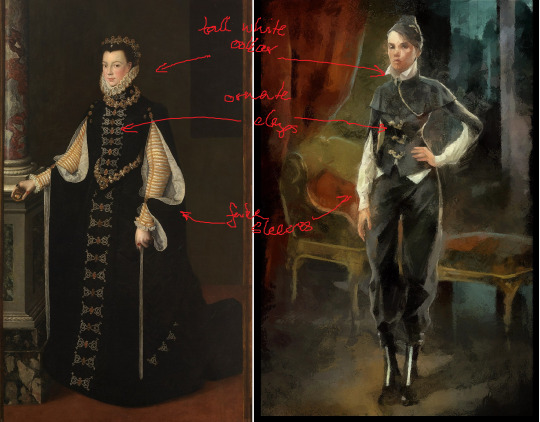
the mini cape thing she has on top is more similar to the style of capes worn by men in renaissance, but yeah, of course she reminded me of a Spanish princess when this is one of the most given example portraits for this style
I wonder if this was an intentional choice on the designer's side or if they were just inspired by the revivalism present in 19th century fashion. what really makes me consider that though is that one of her earlier designs has those sleeves much, Much more pronounced and obvious

oh the things that could have been...
still, it makes me wonder: if this was intentional, what does this tell us about Jessamine, and the history of the Isles themselves?
#dh#dishonored#jessamine kaldwin#fashion history posting#I am not normal about this gown#me and sin even had an au where her and corvo are part of a fashion history reenactment group#still I wonder. does she just like the style? or is she just a little insane about fashion history like I am?#bias admission I spent two years working on a comic that had its entire aesthetic based around renaissance and its 19th century revival#so I might be seeing things where there are none#either way you are welcome Ive been meaning to make this post for Months at this point#we dont know if artificial black dye was already a thing at the time of DH1#another curious thing though!#since this is before silvergraphs were invented Jessamine wouldve been painted in a Particularly Nice Outfit#like if youre gonna pay someone to paint you youre gonna pose in your best garb#and its the same fit she wore to welcome corvo back which means she dressed up nice for him#which I find really fucking cute#anyways heres my insane ramblings I hope you enjoyed
115 notes
·
View notes
Text
Trancework Percussion Dive, Part I
This is really long so I will split it into 2 parts.
Different instruments and combinations of instruments are used for different things in the wonderful world of Mediterranean (and well beyond) trancework. Instruments that fall into the frame drum category are generally the ones used for ecstatic rituals but that is not always the case. So, let's take a look at some instruments to go over what they are used to do and at least some of the reasons why. Apologies in advance to the lyre people (or should I say Apollo-gies?), no stringed instruments in this line up.

First up we have just a basic frame drum. These are usually round, unless you are going for a Spanish or ancient Egyptian model--in which case the drum will sometimes be a square. Like so:

Some modern versions of the frame drum use a synthetic head, which is very good for learning. You get a good sound and an opportunity to build up some strength and toughness in your hands without obliterating your hands on goat hide. A rough goat hide drum will take the skin right off your hand if you are playing for hours and hours. So, either make sure you have a very smooth head or start with a synthetic head drum. I am very partial to the Remo Renaissance frame drum, 16" up to 18" for learning to make trance music. It has a lovely resonance that improves as the drum ages.
If you want to make ecstatic trance music, that's where things start getting more interesting. Most ecstatic traditions of the Med (perhaps all but I am saving room for anything I may have forgotten) involve making music using metal ringing against metal. This is because metal ringing against metal has been used to compel spirits in the Med since at least the Iron Age, if not before. Those associations run really deep to this day. So, any cult that has a focus on that sort of thing will have instruments built for it. Like these!
youtube
This is basically a cake pan. Like the kind you would have in your kitchen if you were inclined to bake. Percussion instruments have a very deep association with accessibility to the common person, the peasant classes, the public, the impoverished. Drums are meant to be smacked and you can do it to just about anything that makes a sound. They are not meant to be expensive or hard to play. So there are quite a few types of percussion instruments that have a whole other life in the kitchen apart from making music.
I am a firm supporter of the cake pan/cooking pot drum revival, especially in ritual context with the Mountain Mothers (like Kybele, Ida, Rhea, Magna Mater, & the Black Madonnas). Other instruments that are devoted specifically to the Mountain Mothers, apart from basic frame drums, include tambourines, tammorras, tribballacce, metal cymbals, sistrum, and pretty much any drum made with some kind of metal that rings against itself.




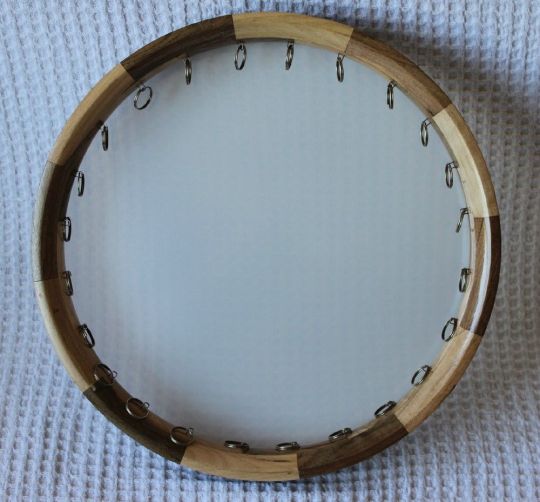

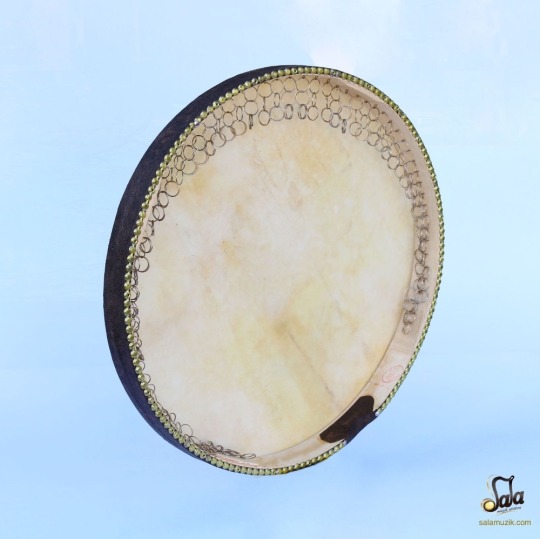

(Pictured: Tribballacce, Tambourine with a hennaed head, metal finger cymbals, a sistrum, Azeri Dayereh, Maghrebi Bendir, Persian Daf, & Egyptian Riqq)
These are all specifically used for compelling spirits, which is something the Cult(s) of the Mountain Mothers are devoted to. And this is something that the Dionysian cults adopted directly from the Cults of the Mountain Mothers. The Mediterranean style of play is what I call single handed frame drum--for lack of a better description. This is a style that is still prevalent among many of the Mediterranean islands and in what is now Southern Italy but it used to be a method used by pretty much everybody in the region.






Okay, I lied. There is one lyre in this post. lol ^
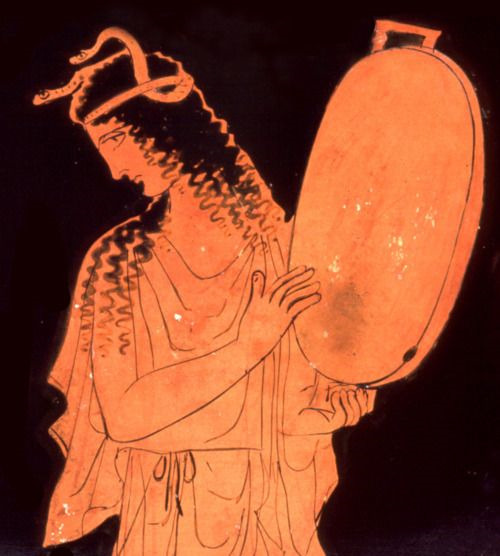
How do you play with one hand? So glad that I imagined you asking! There are a few ways. I started out by studying Southern Italian tammorra and tarantella rhythms but you can start anywhere you find single handed frame drum.
youtube
Now Dionysian trancework does everything and goes everywhere. Some variation of the Cult of Dionysos utilizes every possible avenue of trance. And sometimes so do the Mountain Mothers. I would say Dionysian trancework is an even split between metal and wood/hide percussion while the Mountain Mothers are more strongly associated with ringing metal--especially iron or bronze.
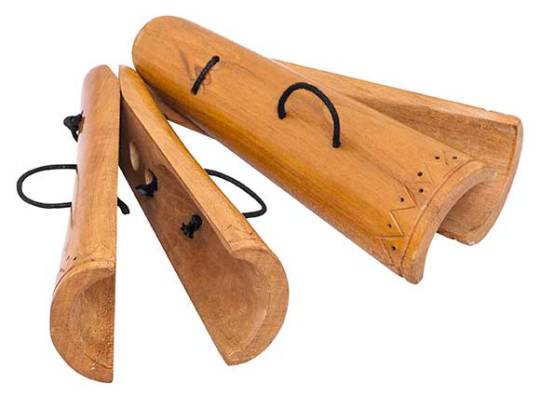

And that is where instruments like this come into play. These are classical Hellenic krotala. There are also even older Egyptian versions made of bone or ivory but the Hellenic version is largely made of wood. More modern options may include large nutshells as well. I did a whole two part deep dive on the Krotala. These instruments are found heavily in the Cults of Artemis & Dionysos but the Mountain Mothers do also occasionally get in on the action with these.

The Egyptian version, dated to about 1900BCE. ^
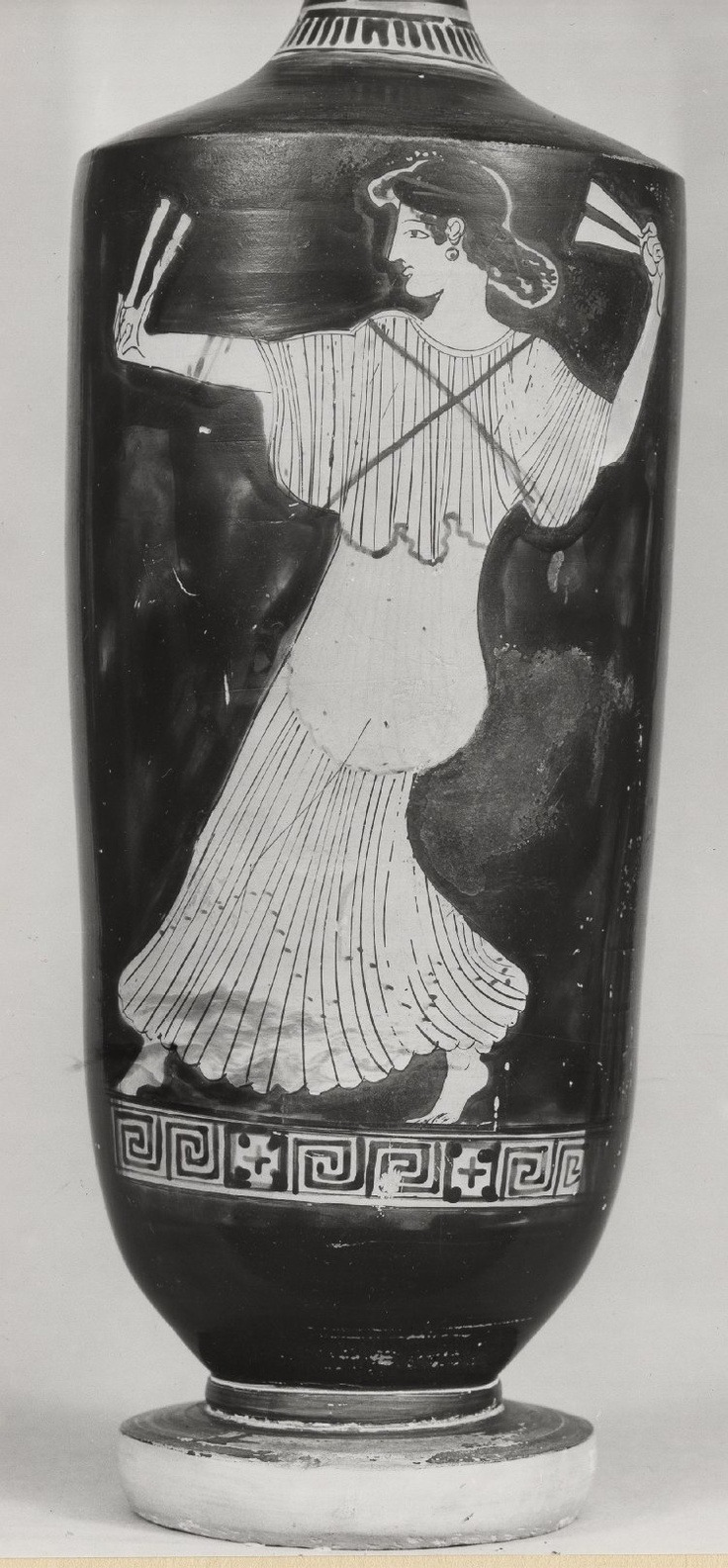


Classical Krotala in context. ^

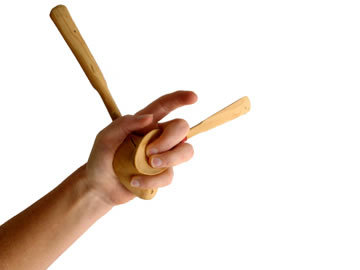

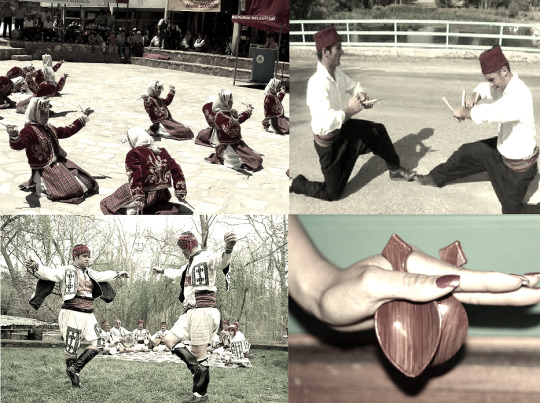
You can still find the dances that go with these traditions out in the world today. The Turkish and Hellenic/Turkish variations use wooden spoons (Kaşık or Kesik). And here's how you get down with these things.
youtube
There is also a Southern Italian version in the same family tree. This is Tammurriata.
youtube
And honestly more variations all over the place that I will have to get into in the 3rd Krotala dive installment. Tammurriata uses naccere, which are basically another name for castanets.
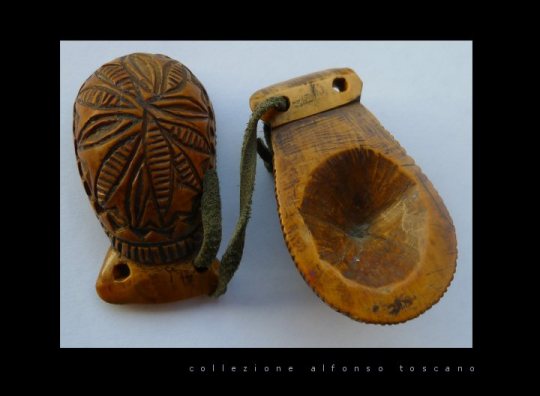

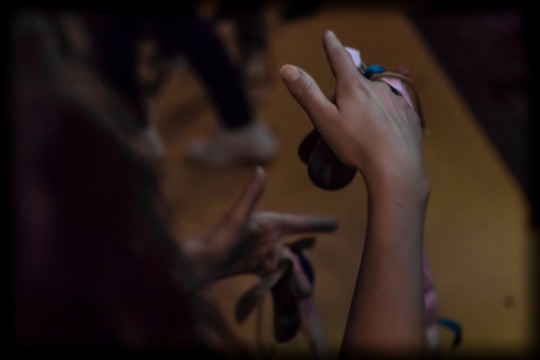
Now you might be wondering why we use different types of percussion for different things. The reason for that is compartmentalization and the inherent spiritual authority of the instrument. Wooden instruments are associated with wilderness deities and are valued at least in some part for their potential to burn. This makes them suitable for gods that double as both wilderness and death deities. Death because of the association with burning on a funeral pyre and special folkloric relationship between the dead and fire. Metals are not used in the same way.
Metals are associated foremost with the mountains where ore was pulled from. This gives them associations with darkness, caves & caverns, as well as monsters that go bump in the night. Secondarily, later in the timeline, metals took on an association with weather-based sorcery--which translates as Wind Spirits and Storm Gods as well as gods and spirits associated with Blacksmithing. So the cult of any deity who rules over caves, the sky, or weather spirits will use metal instruments in their rituals. This encompasses both the Cults of the Mountain Mothers as well as the Cults of the Storm Lords--and all their attending deities. This is where the practices of the Kouretes & Koryvantes come from.
And I will have to pick this up again in part II because I have reached my maximum allotted number of images for this post. Whee!
#trance work#hellenic polytheism#spiritwork#dance ethnology#cults#dionysos#kybele#zeus worship#artemis#Youtube
64 notes
·
View notes
Text
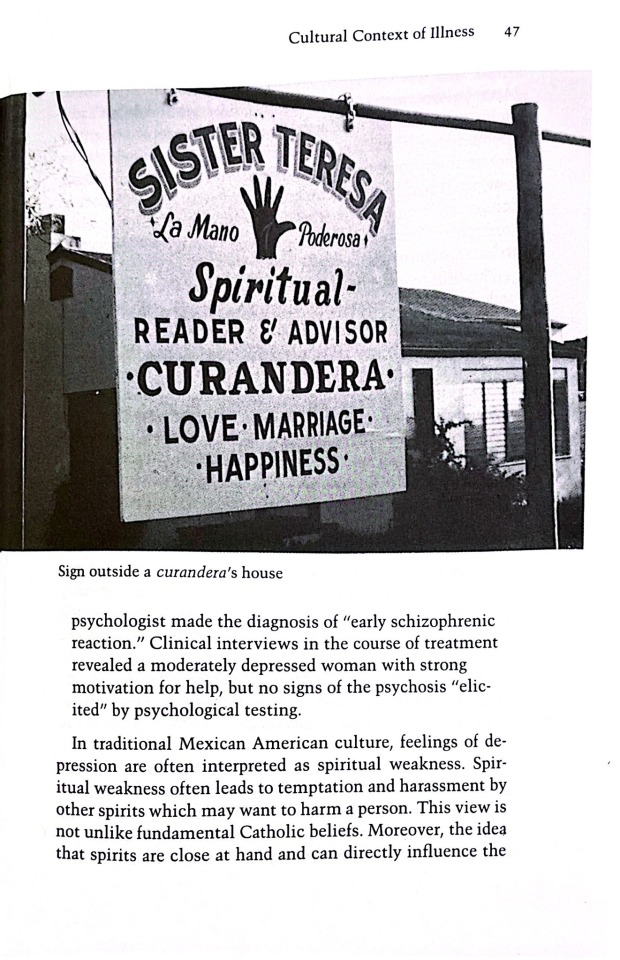
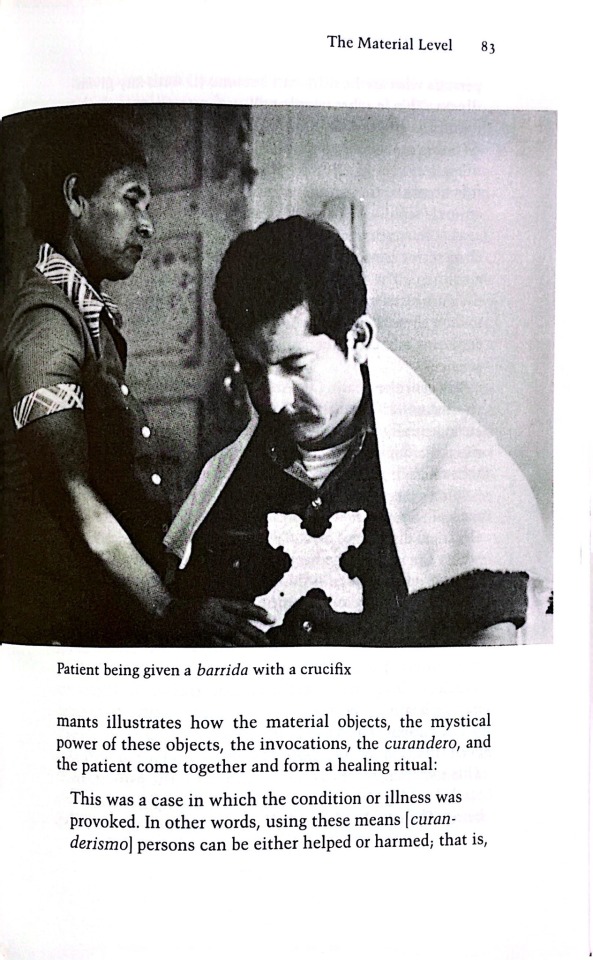
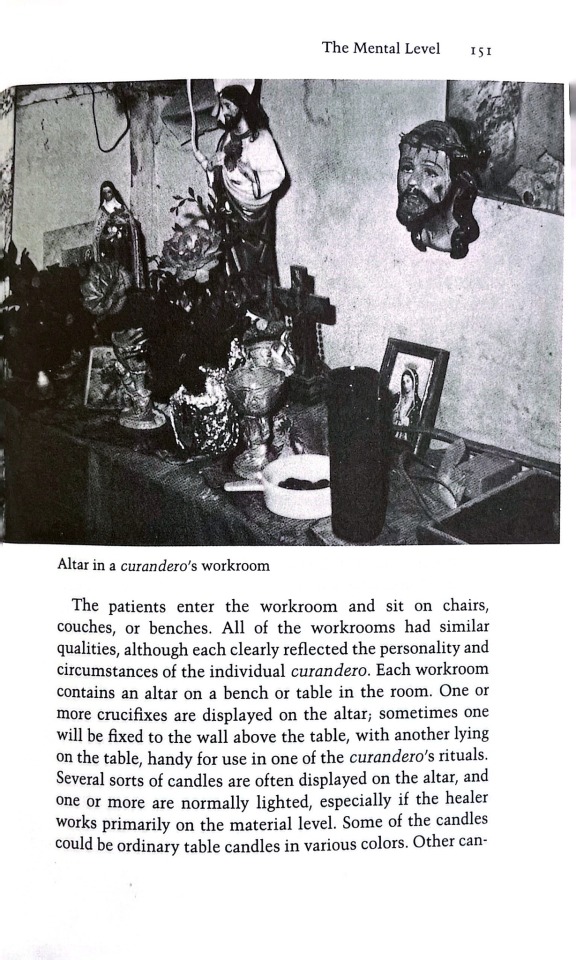
Curanderismo: Mexican American Folk Healing by Robert T. Trotter II & Juan Antonio Chavira
“At least six major historical influences have shaped thebeliefs and practices of curanderismo by Mexican Americans in the Lower Rio Grande Valley: Judeo-Christian religious beliefs, symbols, and rituals; early Arabic medicine and health practices (combined with Greek humoral medicine, revived during the Spanish Renaissance); medieval and later European witchcraft; Native American herbal lore and health practices; modern beliefs about spiritualism and psychic phenomena; and scientific medicine. None of these influences dominates curanderismo, but each has had someimpact on its historical development.”
#my photos#my scans#curanderismo#book scans#spirituality#mexican american#folklore#witchcraft#book quotes#herbal medicine#curandera#curanderos#latinoamericanos#healing rituals#🩻#library#catholocism#brujería#la virgen de guadalupe#bruja#santa muerte#religious imagery#seekdestr0y#mexico#chicano#bookblr#book pages#witchcraft aesthetic#witchblr#palm reading
17 notes
·
View notes
Photo

Spain Square - Seville
Spain, Seville. Spain Square is a landmark example of the Renaissance Revival style in Spanish Architecture.
#architecture#renaissance revival#spain square#seville attractions#visit seville#travel europe#travel photography
46 notes
·
View notes
Text
Latin influence in the English Language


Latin influence on English
Latin influence in the English Language and vocabulary through the centuries. A computerised study and statistical analysis.
English belongs to the Anglo-Frisian group within the western branch of the Germanic languages, a subfamily of the Indo-European languages. It is related most closely to the Frisian language, to a lesser extent to Netherlandic (Dutch-Flemish) and the Low German (Plattdeutsch) dialects, and more distantly to Modern High German. Therefore English is a Germanic language, having a grammar and core vocabulary inherited from Proto-Germanic. However, a significant portion of the English word hoard comes from Romance and Latinate sources. Estimates of native words (derived from Old English) range from 20%–33%, with the rest made up of foreign borrowings. (These estimates, however, are based on the total raw counts of dictionary entries, where the frequency of use for most non-native words is low to nil.
The English vocabulary has increased greatly in more than 1500 years of development. The most nearly complete dictionary of the language, the Oxford English Dictionary (13 vol., 1933), a revised edition of A New English Dictionary on Historical Principles (10 vol., 1884-1933; supplements), contains 500,000 words. It has been estimated, however, that the present English vocabulary consists of more than 1 million words, including slang and dialect expressions and scientific and technical terms, many of which only came into use after the middle of the 20th century. The English vocabulary is more extensive than that of any other language in the world, although some other languages - Chinese, for example - have a word-building capacity equal to that of English.
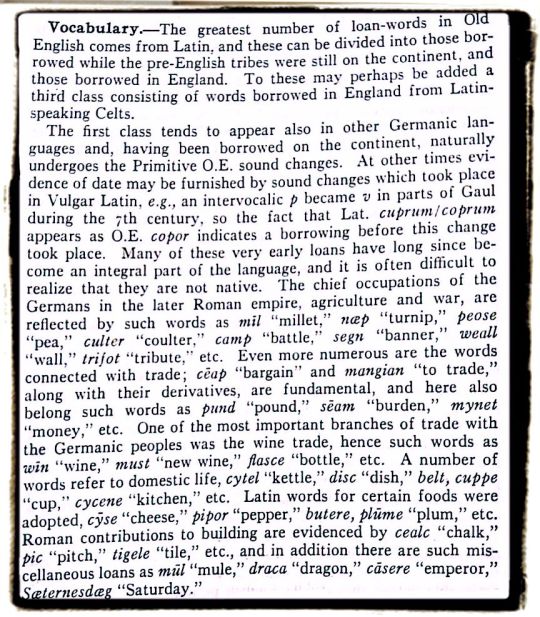
English and Latin
Extensive, constant borrowing from every major language, especially from Latin, Greek, French, and the Scandinavian languages, and from numerous minor languages, accounts for the great number of words in the English vocabulary. In addition, certain processes have led to the creation of many new words as well as to the establishment of patterns for further expansion. The true percent of native words used in everyday spoken and written English actually ranges from 75%–90%.
A large number of these borrowings come directly from Latin, or through one of the Romance languages, particularly Anglo-Norman and French, but some also from Italian, Portuguese, and Spanish; or from other languages (such as Gothic, Frankish or Greek) into Latin and then into English. The influence of Latin in English, therefore, is primarily lexical in nature, being confined mainly to words derived from Latin roots.
The number of Latin words, many of them derived from the Greek, that were introduced during the Old English period has been estimated at 140. Typical of these words are altar, mass, priest, psalm, temple, kitchen, palm, and pear. A few were probably introduced through the Celtic; others were brought to Britain by the Germanic invaders, who previously had come into contact with Roman culture. By far the largest number of Latin words was introduced as a result of the spread of Christianity. Such words included not only ecclesiastical terms but many others of less specialized significance.

Latin and English
In the early part of the Modern English period the vocabulary was enlarged by the widespread use of one part of speech for another and by increased borrowings from other languages. The revival of interest in Latin and Greek during the Renaissance brought new words into English from those languages. Other words were introduced by English travelers and merchants after their return from journeys on the Continent. From Italian came cameo, stanza, and violin; from Spanish and Portuguese, alligator, peccadillo, and sombrero. During its development, Modern English borrowed words from more than 50 different languages.
For instance, the great poet John Milton, as a Renaissance man, was profoundly familiar with classical learning and his works abounds with classical references, which are often used to describe aspects of Christian belief. The wide use of classical and biblical sources is an important element of what is known as Milton's "Grand style". Other stylistic features contribute to the grandeur of Milton's epic poetry, epic simile for example is a technique he often employs following the Homeric and Virginian style. Another important element is the language he used. In keeping the high seriousness of his subject, he tended to use solemn and rather grandiose language, instead of plain simple English, so he often used words that derived from Latin or Italian, and also his syntax was heavily influenced by these two languages.
Word origins. A computerised survey of about 80,000 words in the old Shorter Oxford Dictionary (3rd ed.) was published in Ordered Profusion by Thomas Finkenstaedt and Dieter Wolff (1973) that estimated the origin of English words as follows:
Influences in English vocabulary Langue d'oïl, including French and Old Norman: 28.3%
Latin, including modern scientific and technical Latin: 28.24%
Germanic languages – inherited from Old English, from Proto-Germanic, or a more recent borrowing from a Germanic language such as Old Norse; does not include Germanic words borrowed from a Romance language, i.e., coming from the Germanic element in French, Latin or other Romance languages: 25%
Greek: 5.32%
No etymology given: 4.03%
Derived from proper names: 3.28%
All other languages: less than 1%
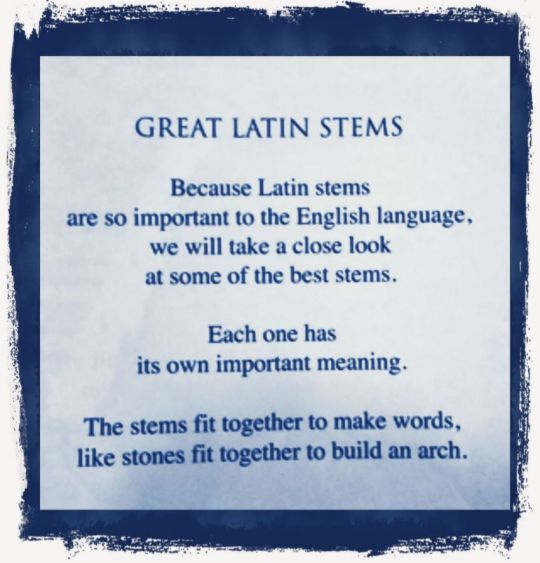
Latin influence on English
A survey by Joseph M. Williams in Origins of the English Language of 10,000 words taken from several thousand business letters gave this set of statistics:
French (langue d'oïl): 41%
"Native" English: 33%
Latin: 15%
Old Norse: 5%
Dutch: 1%
Other: 5%
Based on the above, the percentage of Latin words used in formal business context (15%) is substantially lower than that of the dictionary survey (28.24%) due primarily to the effects of linguistic register, where the vast majority of Latin words in English tend to be of a scientific or technical nature, or consist of words which are rarely to never used (i.e. are functionally obsolete).
Loanwords from Latin
The English language has borrowed extensively from the Latin language beginning during the Germanic period before English was English through the Old English period and up to the early Modern English period. The earliest Latin loanwords date from the period before the Germanic tribes invaded England under invite from the Britons. Latin borrowings continued throughout the Old and the Middle English period, above all Latin influenced the new English language thanks to the literary works of Geoffrey Chaucer, because he knew Latin, French and Italian and admired the main authors who wrote in these languages. English again borrowed heavily from Latin during the Early Modern period that coincides closely with the revival of learning of the Renaissance and with the great dynasties of Tudor (1485–1603) and Stuart (1603-1714) during which many scholars imported many Latin loanwords. Although English is a Germanic language, many common and everyday words are of Latin origin.

Latin influence on English
List of Latin Loanwords
With all the loanwords borrowed from Latin into English, an exhaustive list would be too lengthy to be possible. The following are some of the commonly used Latin loanwords in English:
Agile, abdomen, album, alien, anatomy, animate, animosity, anchor, annual, apostle, area, audio, bacteria, bonus, bovine, butter, Caesar, cancer, canine, capsule, cervix, chalk, cheese, circle, circus, city, civil, chest, church, comet, compensate, color, colossus, complex, consider, contemplate, data, decide, dexterity, deity, discus, disc, disciple, dish, disk, domestic, ego, emperor, equilibrium, erupt, et cetera, excavate, expensive, fauna, feline, feminine, fictitious, flora, floral, formula, fungus, general, genius, genus, gradual, habitual, habitat, honor, id, ignite, immoral, immortality, inertia, infinite, ingenious, insane, interim, janitor, judge, kettle, kitchen, lachrymose, latex, legal, libido, lingua franca, literature, lunar, manual, master, martyr, media, meditate, memento, memorandum, memory, mile, minus, moment, momentum, moral, noble, nocturnal, notorious, opera, orbit, ovum, paper, patron, pauper, pavement, pendulum, peninsula, pepper, percent, persona, physician, plus, pound, propaganda, referendum, regal, revise, rural, sack, series, sex, sickle, similar, simile, status, stimulus, street, subpoena, superego, superintendent, tabula rasa, temple, title, ultimate, vehicle, verbatim, vertigo, vice versa, video, vindicate, wall, wine.
Learn more visiting these useful websites:
https://www.latin-english.com Latin English Dictionary
https://www.etymonline.com Online Etymology Dictionary
You can download the following books on Latin at this page:
Latin Language: Bennett, Charles E.: New Latin Grammar;
D'Oogle, Benjamin L.: Latin for beginners;
Wine, women and songs. Medieval Latin Student's Songs, including translation and commentary by John Addington Symonds.
Or read other articles about the English Language and Literature:
Christianization of Britain, a full article
English, Greek and Latin, a complete article
The Latin Language, a short history
Italian influence on English
English Renaissance, the revival of learning
Short History of the English Language
The essence of English Grammar
Language and grammar
In defence of grammar
The importance of grammar
Short History of the Origin of English
English words origin and vocabulary
History-of-the-English-Language.pdf
British-history-milestones-synthesis
Questions-about-the-english-language
History-of-English-Literature-Summaries.pdf
British_literature_history_chart_summary.htm
General_literature_history_chart_summary.htm
American_literature_history_chart_summary.htm
British_english_history_timeline.htm
http://www.youtube.com/watch?v=_6eYkDhH61Y
More videos;
Latin, the key to English
Latin influence on English
Latin and Greek roots
Read the full article
#Anglo-Norman#dictionary#English#entries#French#germanic#language#latin#loanwords#OldEnglish#OldNorman#Oxford#Romance#words
4 notes
·
View notes
Text
The History of Latin: From Ancient Rome to Modern Times
Latin, the language of the Romans, has traversed a fascinating journey through time, evolving from its humble beginnings in a small Italian peninsula to becoming the foundation of the Romance languages and a significant element in various academic and legal contexts today. This blog post will explore Latin's incredible evolution from Ancient Rome to modern times, showcasing its enduring legacy.
Ancient Beginnings
Latin originated around the 8th century BC in the region of Latium, near present-day Rome. It was just one of many Italic languages spoken in the Italian Peninsula. However, as Rome expanded its territory, Latin became the dominant language, used for communication, trade, and administration. The language of the Roman Empire was not static; it evolved over time, with Classical Latin, the language of literature, history, and oratory, flourishing during the Roman Republic and the Roman Empire.
Medieval Latin
After the fall of the Roman Empire, Latin didn't fade into obscurity but transitioned into Medieval Latin during the Middle Ages. Despite the collapse, Latin remained the lingua franca of educated individuals, particularly within the Church, governments, and universities across Europe. Medieval Latin was more flexible compared to its classical ancestor, incorporating elements from local languages, which led to the development of the various Romance languages, such as Italian, French, Spanish, and Portuguese.
Renaissance Revival
The Renaissance marked a resurgence of interest in the classical heritage, including Latin. Humanists sought to revive the purity of Classical Latin, distancing themselves from the Medieval Latin they considered corrupt. Latin during the Renaissance was a vehicle for new ideas in science, philosophy, and the arts, serving as a bridge between scholars across different regions.
Latin in Modern Times
Today, Latin is no longer spoken as a native language, but its influence is ubiquitous. It's the official language of the Vatican City and remains a critical tool in academia, particularly in fields like law, medicine, theology, and scientific classification. Legal terms like "habeas corpus" and scientific terminology such as "Homo sapiens" are Latin. Learning Latin can also offer a deeper understanding of the Romance languages, given their Latin roots.
Moreover, Latin phrases and mottos continue to resonate in modern culture, capturing universal truths and human experiences. Phrases like "Carpe diem" (Seize the day) and "Veni, vidi, vici" (I came, I saw, I conquered) are widely recognized and used to inspire and communicate across languages and cultures.
The history of Latin is a testament to the language's resilience and adaptability. From its origin as a local dialect to its status as the language of the Roman Empire, and its enduring presence in modern academic and legal contexts, Latin has proven to be an enduring vessel of human knowledge and culture. Its legacy is a bridge that connects us to our past, enriches our present, and continues to influence our future. So, the next time you come across a Latin phrase or delve into a Romance language, remember the rich history and the journey of this ancient language through the corridors of time.
#latin language#latin linguistics#learning latin#roman#romance languages#latin#latin history#latin language history#history of the latin language#origin of latin
2 notes
·
View notes
Text
From “My Great-Grandfather Was a Racist” by Editor-in-Chief Gabriel Arana, from the September/October 2023 issue of Texas Observer magazine:
My great-grandfather, José-María Arana, was a racist.
After the United States barred Chinese men from immigrating under the Chinese Exclusion Act of 1882, tens of thousands sought a new life in Mexico, where they faced no warmer a welcome as they established themselves. A former schoolteacher and businessman, José-María led a vicious campaign against the Chinese in the Mexican states of Sonora, Sinaloa, and Baja California in the early 1900s.
Seeking “all legal means to eliminate the Asian merchant,” whose growing prosperity he viewed as a threat to the working class and Mexican national identity, José-María formed a junta of local businessmen in 1912 to address what he called “the tremendous calamity of the Chinese jaundice.” He launched a newspaper, Pro-Patria, whose masthead boldly proclaimed, “Mexico for the Mexicans and China for the Chinese.” Featuring racist jokes and caricatures, the broadsheet portrayed Chinese immigrants as carriers of disease and a threat to Mexican women.

“We cannot live together because there exists an absolute incompatibility in race, social customs, and economy,” José-María wrote in its pages.
My great-grandfather carried his message throughout Northern Mexico, making speeches in working-class towns like Cananea—whose poor copper miners he thought ripe for radicalization—and urging city and state leaders to restrict the types of businesses that Chinese immigrants could run, relegate them to ghettos, and expel them de manera definitiva [in a definitive way].
I’ve thought increasingly about my great-grandfather and his ignoble legacy as I’ve settled into life in Texas, where the Confederate cause is memorialized on statues, flags, and street signs. Growing up on the U.S.-Mexico border in Nogales, Arizona—where José-María’s widow, my great-grandmother, settled after his death in 1921—I knew little about my family tree’s racist roots. Like a lot of gay kids who come from a small town, I left to find people like me in bigger cities and only much later started to contemplate my origins.
Afew months after moving here in the summer of 2022, I visited the Capitol grounds with my in-laws from London. The Texas State Capitol is an imposing Renaissance revival structure made of pink granite with a dome that, Texans remind you, is taller than the U.S. Capitol. But what impressed us all the most on that first visit was the enormous Confederate Soldiers Monument on the right as one walks up to the entrance from 11th Street.

Chinese immigrants sent José-María postcards with derisive poems in Spanish. Translation: Of your attacks I laugh / and you even give me compassion / And it makes me neither hot nor cold / your ridiculous oration. / And they say from Grand China / that you're gotten involved with the dance / with your gross propaganda / to fill your belly. —Ju Kun Lee
A bronze statue of Confederate President Jefferson Davis stands atop one of five pillars, the other four support figures representing the branches of the Confederate military. The inscription on the pedestal below commemorates the 437,000 soldiers who “died for states [sic] rights guaranteed under the Constitution” and asserts that “the People of the South, animated by the spirit of 1776, to preserve their rights, withdrew from the federal compact.”
“It’s Texas,” I said preemptively, feeling defensive and embarrassed at the same time as my in-laws looked on in horror. It’s the same way I feel when an outsider mentions the state’s abortion ban or attacks on LGBTQ+ people.
The Confederate Soldiers Monument is one of 12 memorials on the grounds that perpetuate the “lost cause”—the historical myth that the Confederate cause was heroic and not about slavery.
Read more at the Texas Observer.
Images courtesy of the Special Collections at the University of Arizona Library.
5 notes
·
View notes
Text
Mekhashepha in Melungeon Culture: Breaking it Down
In order to understand Mekhashepha and its ties to Melungeoninity you must first understand some history. In recent years there has been a lot of push back against cultural Melungeons sharing their traditional culture and practices, with new age Melungeons demonizing and invalidating Melungeon culture in search of something more “mystical” in the form of appropriating Indigenous tribes form which they have no proof of claim. It is no secret that this denial and invalidation is rooted in antisemitism, and denial of Hebrew Melungeons. It is undeniable that Melungeon (and Appalachian) people have Hebrew influence, whether this influence is ethnic, cultural, religious, or both varies per family. This can be substantiated by looking at many common Melungeon names (and old Appalachian names), surnames, dialect, and traditions. Examples can be seen in the common Melungeon surname Cohen>Cowen>Gowen>Goin/Goins as well as common Melungeon given names such as Mahala, Nehemiah, Keziah, Hezekiah, Uzziah, Etc. Melungeon people also have undeniable ties to Spain/Portugal this can also be substantiated by things like surnames (chavis/chavez), traditions, dialect, Oral History, and DNA. Mekhashepha is an ancient Hebrew word, it has been in use since before we existed as Melungeon people, however in the early 1900′s a man named Eliezer Ben Yeuhda, a lexicographer, created the first Hebrew English dictionary, becoming a driving force in the revival of the Hebrew Language, giving terms like Mekhashepha a resurgence, even if temporary at best. Many words coined by Yehuda became part of everyday Hebrew language while others died out or never caught on. The ancient origins of Melungeon people remains unconfirmed today, but it was once a common rumor among colonizers that Melungeon people were born of an affair between The Devil and an Indigenous Woman. This is important to note because this is likely in part why the term Mekhashepha was weaponized against our people. Though Melungeon people are not specifically mentioned, the book “ Religious Authority in the Spanish Renaissance “ by LuAnn Homza notes Nicholas De Lyra’s use of the Onkelos Targum when translating the term Mekhashepha to refer to a female soothsayer, sorceress, or witch, with carnal ties to the Devil. Mekhashepha originally tended to refer to a title, usually that of a female, and not the name of their religious or spiritual practice, though today, following Yehuda’s dictionary, it seems to be used interchangeably. In the Torah and the Old Testament, the Mekhashepha are also included with "necromancers", "those who cast spells", "those who summon spirits" etc., as "an abomination to Yahweh" in Deuteronomy 18:9-10. Mekhashepha does however have controversial translations as many scholars debate it may refer to an herbalist, healer, poisoner, or even pharmacist. In some translations it is said Mekhashepha may be relied on to heal the sick, foretell the future, and predict agricultural outcomes. These are all things that were tied to Melungeon folk and traditional beliefs as well and can be seen still today in practices like faith healing, the man of signs, reading cards, using blood beads, folk remedies, etc. Due to the negative associations between Mekhashepha and Satan, many Melungeon people were not enthusiastic about identifying with the term, however neither were they about identifying as Melungeon. In recent, with the rise of popularity in witchcraft, natural healing, cultural acceptance, and feminism, many Melungeons have made the decision to reclaim these terms and wear them and identify with them proudly, while others still feel uncomfortably with these terms. For further reading on Mekhashepha:
https://history.stackexchange.com/questions/39828/what-was-the-churchs-attitude-to-magic-prior-to-the-15th-century
https://en.wikipedia.org/wiki/Eliezer_Ben-Yehuda
https://www.academia.edu/33078425/When_a_single_word_matters_The_role_of_Bible_translations_in_the_witch_hunt_in_the_Grand_Duchy_of_Lithuania
https://archive.org/stream/AbrahamAbulafiaAStarterKit/AncientJewishMagic_djvu.txt
35 notes
·
View notes
Photo

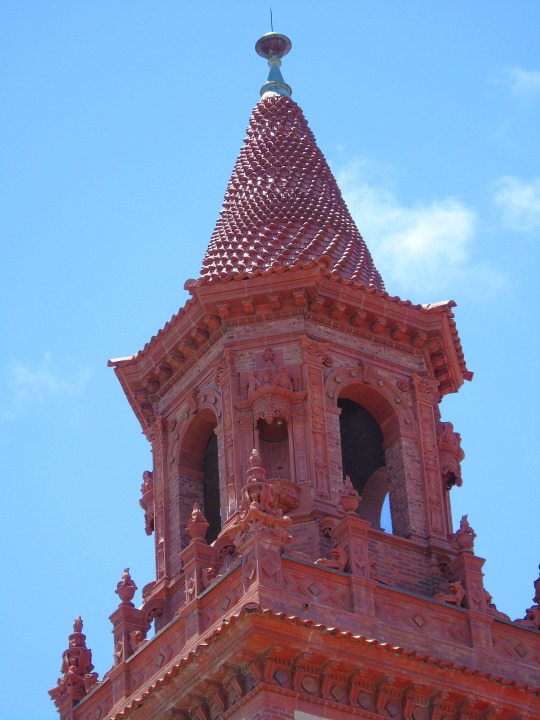
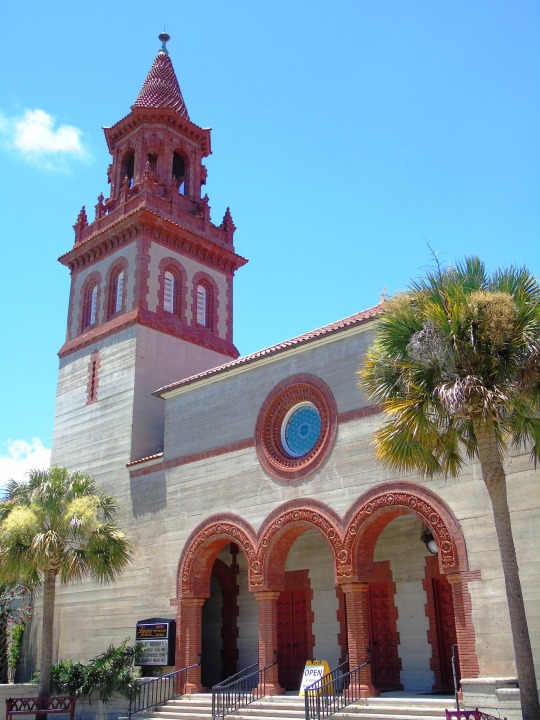
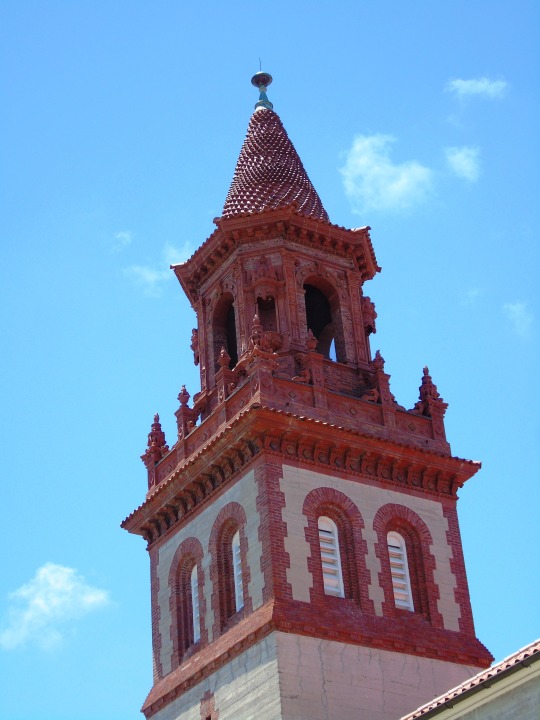


The Grace United Methodist Church was added to the U.S. National Register of Historic Places on November 29, 1979.
#Grace United Methodist Church#US National Register of Historic Places#USA#summer 2016#Carrere and Hastings#Spanish Renaissance Revival#Florida#St. Augustine#29 November 1979#original photography#architecture#travel#exterior#façade#detail#bell tower#palm tree#cityscape#landmark#tourist attraction#anniversary#US history
1 note
·
View note
Text
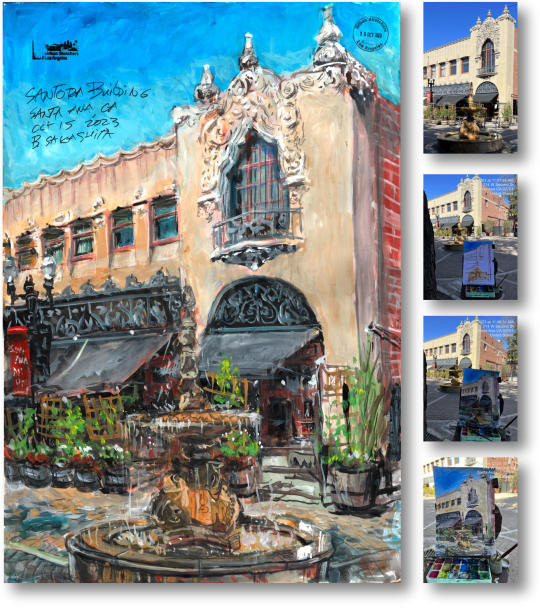
Today's Sketching Event with the Urban Sketcher Los Angeles. What a great selection of location! The site was spectacular! (I added some note about this place at the bottom of the post if anybody wants to know more)
"Santora Building", Santa Ana, California
HIMI gouache on cover stock smooth paper 100 lb 13" x 19" Sketched on location live from 11:07 AM to 12:05 PM, 1 hour
October 15 2023
The Santora Building occupies almost half an acre in the heart of the Santa Ana Arts District at 2nd and Broadway. Locally prominent architect Frank Lansdowne designed the building in 1929 in the Spanish Renaissance Revival style with extensive Churrigueresque ornamentation and ornamental ironwork. Daniger’s Tea Room, famous for its home-cooked meals, delicious tea, cakes and pie that attracted notable Hollywood celebrities, was located in the building in the 1930s and 40s. It also served temporarily as City Hall after the 1933 earthquake damaged the building at 3rd and Main. Today it houses restaurants, galleries, offices and the California Center for Digital Arts. It is a California Historical Landmark and listed on the Santa Ana Register Of Historic Properties and National Register of Historic Places.
#uskla#usklosangeles#油彩画#水彩画#bandedessinée#comic#watercolor#croquis#heritageparkcerritos#citysketch#スケッチ#dessin#manga#urbansketchers#aquarelle#Tebeos#アート#イラスト#グラフィック#デザイン#マンガ#만화#california#santorabuilding#art#urbansketching#watercolorsketch#santaana#watercolorlandscape#watercolorpainting
3 notes
·
View notes
Text
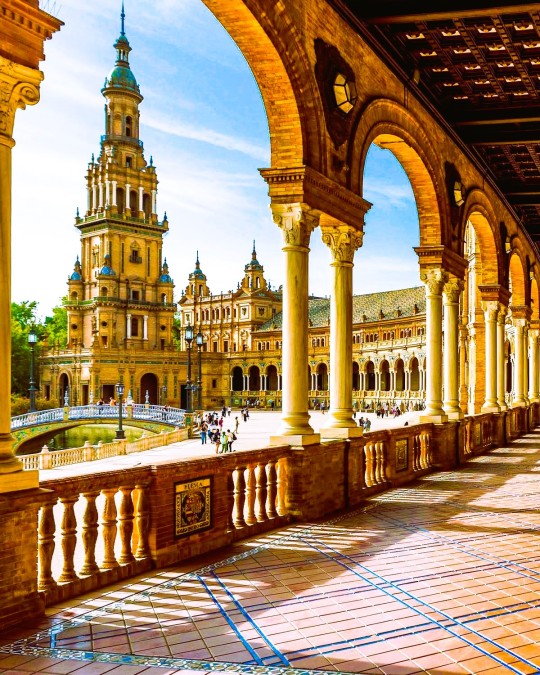
Plaza de España, Seville, Spain: The Plaza de España is a plaza in the Parque de María Luisa, in Seville, Spain. It was built in 1928 for the Ibero-American Exposition of 1929. It is a landmark example of Regionalism Architecture, mixing elements of the Baroque Revival, Renaissance Revival and Moorish Revival styles of Spanish architecture. Wikipedia
103 notes
·
View notes
Link
#austria#classicalmusic#europe#festival#HofburgPalace#KunsthistorischesMuseum#museum#opera#Ringstrasse#vienna#viennesecuisine#viennesewine
0 notes
Text
Worldbuilding | North African Livelihood, 1920

A Camel Plow Being Used In Algiers, Algeria, North Africa, In The Early 20th Century.
As a result of being situated so close to Europe, North Africa was majorly under Spanish or French rule during the early 20th century. The Moroccan protectorate itself was established in 1912, after the Entente Cordiale—a treaty concluded between France and Britain in 1904, which settled a number of hostilities between the two countries—and the Cameroons had been ceded to Germany in 1911. Both acts together left France free to divide the country with Spain, which took over the Rif Mountains in the north and the border region with the Spanish Sahara in the south. Libya was similarly invaded by Italy in 1911, but the prolonged resistance of the Sanūsiyyah in Cyrenaica denied the Italian Fascists control of the country until 1931.
During this time, art schools in Egypt focused on academic, Renaissance-based training; the Orientalist and post-Impressionist imagery of the French settlers overshadowed indigenous modernist ones by Moroccan, Algerian, and Tunisian artists. European schools and galleries featured romanticised imagery of the local landscape.
Following World War I, North Africa was swept by a tide of nationalist and anticolonial movements; artists and intellectuals struggled to define national culture in the face of their particular histories and colonial realities. Debate among Egyptian intellectuals and writers centered on building a secular nation-state based on European models with an emphasis on education, industrialisation, and the emancipation of women. The Egyptian national government supported art institutions and sent graduates of the school, both men and women, to study in Europe, making Egypt a regional nexus for artistic innovation and training. Art as a creative discourse among modern Egyptians found its purpose at first in the nation’s reformist aspirations; intellectuals and artists were seen as best qualified to define the new features of modern Egypt. Thus, the movement for independence in Egypt accelerated.
In contrast to Egyptian artists, who benefit from the support of a national government and local patronage, other North African artists were marginalized, receiving limited training or support. The French promoted North African self-taught artists’ work in France as the art of an underdeveloped nation. They were more interested in reviving traditional Moroccan crafts. Despite their proximity to Europe, North African artists did not adopt contemporary Western art and techniques. Early works by these artists followed academic styles, adaptations of illumination and miniature painting. Without access to modern art institutions, North African artists rejected the imposed Orientalist and Neoclassical modes; many moved to France, where they adopted the new trends in Abstract Expressionism and other contemporary styles, returning after independence to lead a new international art movement. In the post-independence period, calligraphy emerges within the realm of abstraction in this region, as well as in other Arab countries.
France’s harsh occupation in Algeria was a reflection of its conception of the country as an extension of itself; French replaced Arabic in all public schools, and indigenous history and culture were excluded from the curricula. Foreign occupation continued to fuel a growing secular movement for independence.
As a result of these influences, there were several languages spoken by the people of North Africa during this time. They were as follows;
Arabic
French
Hebrew
Farsi
Portuguese
Spanish
Swahili
Turkish
Twi
Additionally, there were a few more spoken by specific local communities;
Berber/Imazighen (with regional dialects)
Punic
African Romance
Lybic
Coptic
Nubian
Greek
With the exception of Imazighen languages and Nubian, the rest are considered extinct languages.
0 notes